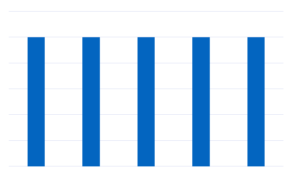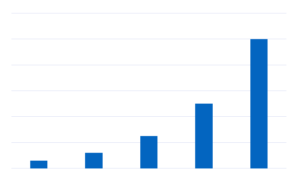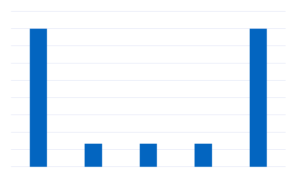
Attribution Modelling I: the Beginner’s Guide
In the modern age, people visit your site multiple times before they convert. Yet many of us use the most simplistic attribution model – Last Click – giving us an incorrect view of how sales are coming to the site.
Changing the attribution model that you use on-site, as well as between campaigns, can really help you drive down into your data and get more value from it. By having the correct attribution model, you can more easily see which channels are underperforming and which are overperforming.
But what models work in what situation? Let’s take a look.
Last Click

Last-click is probably the most used attribution model but is not right for a lot of businesses. In last click, 100 percent of the conversion is attributed to the last touchpoint.
Last-click is useful for businesses that are based around instant sales, with no consideration phase at all. However, if there is a consideration phase – for example, businesses that have larger AOVs – then last click can be wrongly attributing the revenue to the wrong channel.
First Click

First-click is – shockingly – the complete opposite to the last click model. First-click attributes 100 percent of the conversion to the first touchpoint in the customer journey. For example, if the first touchpoint for a customer is an organic listing, then organic search will get the entire value of the conversion.
First click models are useful for campaigns that are designed around raising brand awareness.
Last Non-Direct Click

Last Non-Direct Click does exactly what it says on the tin. It attributes the conversions to the last click prior to any direct visits. This model works out what the visit was prior to the direct visit, and then attributes 100 percent of the revenue generated to that channel.
This model is useful for multi-step journeys, where the user may have already decided that they want to purchase a product and simply does a direct visit to the site to purchase. In that case, the purchase should not be attributed to the direct visit, as the user had already decided to purchase a product prior to that, so the revenue should be attributed to the previous session and channel.
Google Analytics has this attribution model set as the default one, which is the reason that your multi-channel funnel reports and Google Analytics reports don’t match up.
Last AdWords Click

Analysts are very creative with their naming, so Last AdWords Click does exactly what you think it would. It attributes 100 percent of the conversion to the last AdWords interaction.
This model should be used sparingly, as it only attributes conversions to AdWords and no other channels.
Linear

Linear makes a departure from the way conversions are attributed in the previous models. In the previous models, only one channel can have a conversion attributed to it, and the rest of the channels are all excluded. In a linear attribution model, every channel that has been a touchpoint is attributed an equal share of the conversion. So if there are five touchpoints, then the conversion is split between all five, at 20 percent each.
Linear is a good attribution model for campaigns that are targeted to maintain contact with the user throughout their journey.
Time Decay

The Time Decay model works based on the theory that the closer a touchpoint is to a conversion, the more influence that touchpoint had and therefore, the higher the percentage of conversion that should be attributed to that channel. Time Decay models exponentially decay the value of each touch point as it gets further from conversion. In Google Analytics, you can even set how long you want the half-life to be.
Time Decay is useful for shorter campaigns and is a great ice breaker if you are just getting into attribution models.
Positional Based

The Positional model is a mixture of all the other models. In the standard positional model, 40 percent of the conversion is attributed to the first and last interactions. The other 20 percent is then split evenly between any other touchpoints.
Positional based models should be used if there are multiple campaigns running that are designed to raise both brand awareness and interaction, as well as drive conversions.
Both Positional and Time Decay are useful models for comparisons against other models, especially when you come to design your own custom attribution model, but we’ll discuss how to do that in another attribution modelling blog post.
For now, using Time Decay and Positional models should be good enough for you to enter the world of attribution models, and to really get a better grip on how different channels are not only assisting conversions but also driving conversions in their own right.
